TMJ
TMJ disorder is caused by imbalance
of body posture and 12 meridians
TMJ
TMJ disorder is caused by imbalance
of body posture and 12 meridians
TMJ moves whenever you speak, chew, and swallow! The jaw joints withstand molar teeth touching each other for more than 3,000 times every day. The jaw and joints can tilt to one side depending on the person’s posture and chewing habits. As the time passes the difference in chewing strength and torsion between the left and right become more severe, leading to facial asymmetry.
There are an abundant amount of delicate sensory nerves located at the jaw joints which react to even the slightest change in movement. Think about how just one tiny foreign object between the teeth feels extremely uncomfortable and odd, then imagine how much of physical complications can imbalance in jaw joints cause. Balancing two jaw joints is an integral part of the pain treatment.
5 Major symptoms of TMJ disorder
A TMJ disorder is caused by problems with the discs, joint capsule, ligaments, and muscles that compose of the jaw joint.
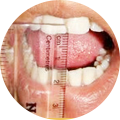
01 Limited ROM
Limited range of mandibular movement (less than3mm), which may cause difficulty eating or even talking Pain or tenderness in the jaw, especially at the area of the joint.

02 Deviation with mandibular movement
There may also be incoordination, asymmetry, or deviation of mandibular movement

03 Irregular Jaw opening
TMJ may occur when the jaw twists during opening, closing or side-motion movements.
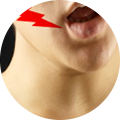
04 Clicking or Popping sounds
Clicking or popping noises when opening the mouth
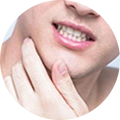
05 Jaw Joint Pain
- Pain in or around the ear
- Headaches and neck aches
- Tenderness of the jaw or jaw muscles
- Jaw pain when chewing, biting, or yawning
Why does TMJ disorder occur?
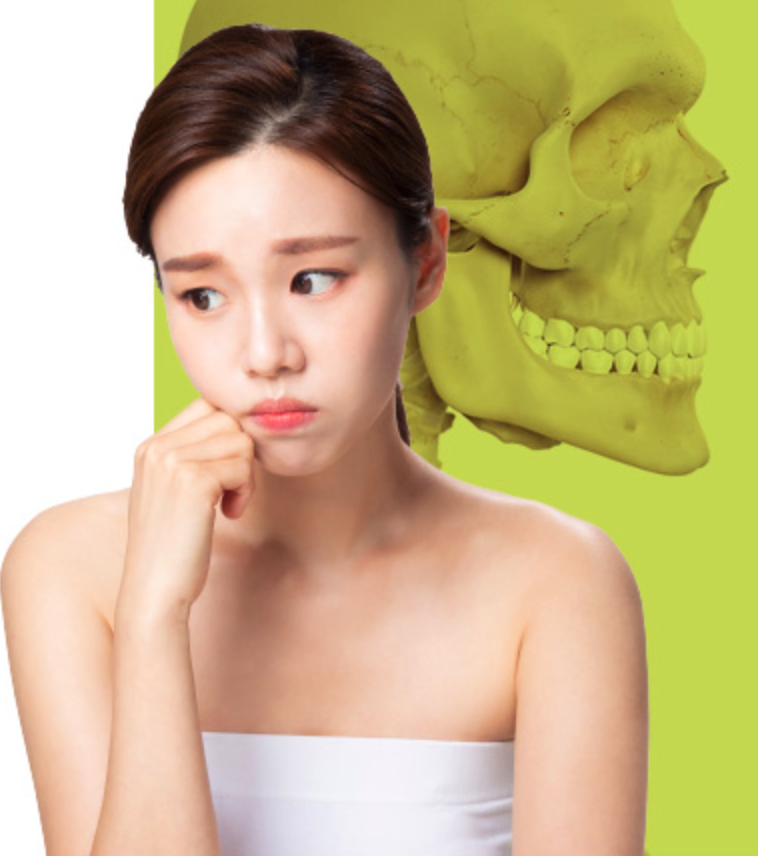
There can be one or more underlying causes for your TMJ. Usually, it is due to unhealthy habits and stress. Chewing food or bad body posture may cause stress in your jaw. Imbalances in the left and right postures, such as in the neck, pelvis, and foot length, can also cause imbalances in your jaw joints. Stress can lead to an increased tension in the body, leading to bad habits such as cheek chewing without recognizing it
Causes of TMJ Disorder
Check if any of these apply to you
- Tendency to chew using only one side
- Frequently opening mouth for a long duration of time due to dental treatments
- Habitually resting your chin on your hand, or sleeping one side
Habitually clenching or grinding teeth
- Upper teeth and lower teeth do not line up
- Neglecting teeth damage
Do you have postural imbalance?
Head forward or straight neck
Shoulders not on same level
Tilted in pelvis
Imbalance in feet
Difference in leg lengths
Tense neck and jaws due to stress
- Tilted neck
Curved spine
TMJ Syndrome

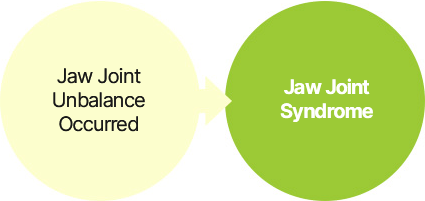
What is the difference between TMJ disorder and TMJ syndrome?
If the TMJs are out of balance, pain is likely to occur at the TMJ even with a minor shock. In addition, imbalance in the jaw joints leads to imbalances in the face, spine, pelvis, and foot. Since TMJ stimulates the cranial nerves, meninges, and arteriovenous veins, TMJ imbalance can cause a variety of neuralgia symptoms, including headaches and dizziness.
Symptoms of TMJ syndrome
 Headache
Headache
Headache is caused by dislocated cervical 1 and 2 due to TMJ imbalance. The cervical 1 and 2 stimulate meninges, arteriovenous, and cranial nerves.
 Deviated nasal septum & Chronic Rhinitis
Deviated nasal septum & Chronic Rhinitis
Unbalanced face causes the nose and septum to curve. As a result, the nasal cavity becomes narrower and chronic rhinitis becomes more difficult to treat
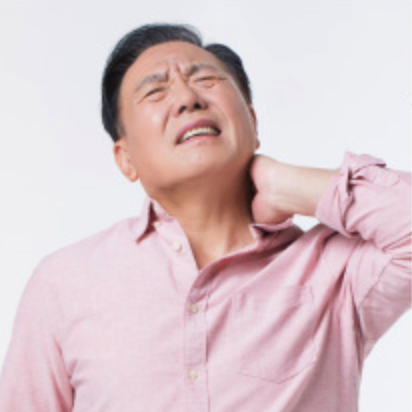 Trigeminal neuralgia
Trigeminal neuralgia
Trigeminal nerve is the largest cranial nerve that covers the broadest area. It is located near the jaw joints and can easily be pressured by the unbalanced jaw.
 Chronic fatigue / Decline in brain function / depression
Chronic fatigue / Decline in brain function / depression
Imbalance in jaw joints negatively affects cranial movement. It disrupts the flow of the cerebrospinal fluid which causes chronic fatigue. Depression can also be caused because of the unbalanced cranial nerve signal.
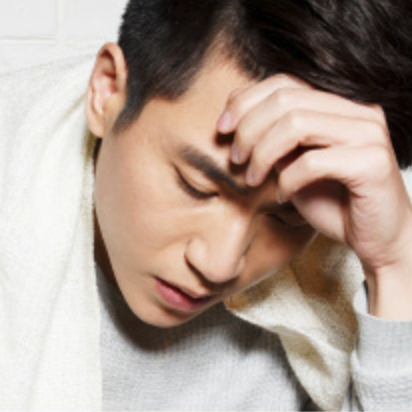 Dizziness, ear pain, or tinnitus
Dizziness, ear pain, or tinnitus
The part of the brain that regulates balance is in the temporal area. If the unbalanced jaw pressures the temporal bone, the temporal bone turns causing dizziness, ear pain, and tinnitus.
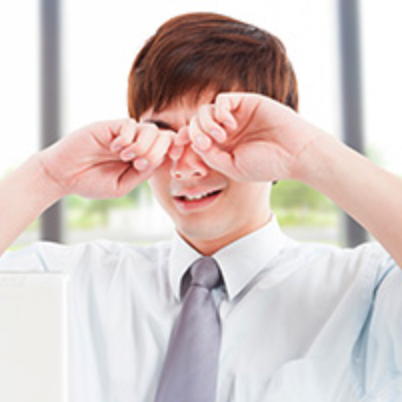 Eye dryness, pain, dazzling, eye fatigue, inflammation, unbalanced eyesight
Eye dryness, pain, dazzling, eye fatigue, inflammation, unbalanced eyesight
The optic nerve passes through sphenoid bone. The sphenoid bone is connected to the jaw with a strong muscle, as a result, when the jaw is distorted, the sphenoid bone follows, causing eye related symptoms.
 Twisted spine and pelvis
Twisted spine and pelvis
C2 is the center axis of the body’s balance. It is also the pivotal axis for the body’s movement and the jaw joints. When the jaw becomes unbalanced, the spine and pelvic joints become twisted in chain reaction, leading to chronic pain.
 Craniofacial Asymmetry
Craniofacial Asymmetry
Craniofacial asymmetry can be caused by unbalanced movement in the jaw joint for a prolonged time.
Treatment of the TMJ

You can recover from jaw joint disorders and jaw joint syndrome.
We treat the cervical spine 1 and 2 and correct the balance of the vertebral and pelvis and resolve the imbalance of the whole-body structure. It is a specialized treatment method unique to MBR ACUPUNCTURE & HERB, created by researching and integrating 13 fields of pain therapy medicine worldwide.
1. Treatment of TMJ disorder to restore the balance of the jaw joint
MBR(Meridian Balance Restoration) Appliance
Restores and maintains the balance of TMJ and cervical spine 1,2 and 12 meridian
TMJ Acupuncture
Treatment
Restore the normal length and movement of the muscle and myofascial related to the TMJ
MBR Herbal
Treatment
MBR herbal treatment can apply it when there is severe stress or inflammation or is accompanied by other pain.
2. Treatment that eliminates causes disrupting the balance of the TMJ
C1, C2 Treatment
Correcting the cervical vertebrae, the axis of TMJ movement, to treat TMJ disease and prevent recurrence.
Spine & pelvis balance
It is recommended to balance the pelvis, as the torsion of the pelvis may lead to the shoulders, neck, and jaw.
Matching balance between
the Left & Right leg and foot
If there is an imbalance in leg length and foot, the jaws also become imbalanced as a compensation. Thus, balancing legs and feet must be corrected.
FAQ
The range of treatment is determined by the level of imbalance accompanying the TMJ disorder. If you have a TMJ disorder but have a good the shoulder-pelvis balance, treating just the jaw joints should be sufficient. If you have a TMJ disorder and your shoulders and pelvis are imbalanced, you may need treatment for the TMJ, C1& C2.
Orthotics are requiring if there is the deformity of the foot or the asymmetry of the left and right feet, since the problem of the foot can travel through the pelvis and vertebrae, ultimately resulting in the imbalance of the TMJ.
In the case of TMJ disorders, MBA is essential for jaw joint disc problems, jaw opening with deviation, inflammation of the jaw joint and for the purpose of treating the jaw joint syndrome.
Malocclusion can lead to TMJ disorders and syndromes. If you have a TMJ disorder and have a malocclusion, you can get dental treatment for a malocclusion after a MBA treatment.
There are no restrictions using TBA during retainer or orthodontics.
Imbalance of the jaw joints causes facial bone torsion, causing facial asymmetry. In the case of imbalance of jaw joint and movement disorder, it can be treated through a MBA and systemic treatments.
With jaw joint syndrome, it is possible to have no discomfort in the jaw. The treatment of jaw joint syndrome aims to maximize natural healing power by correcting minute differences in the jaw joints regardless of the pain in the jaw joints.